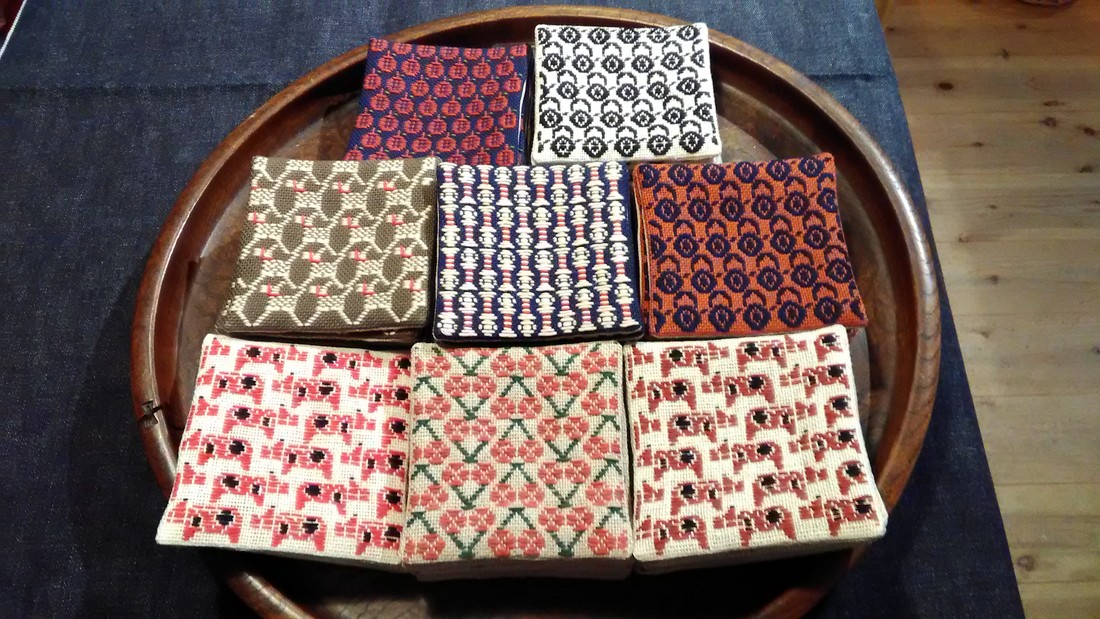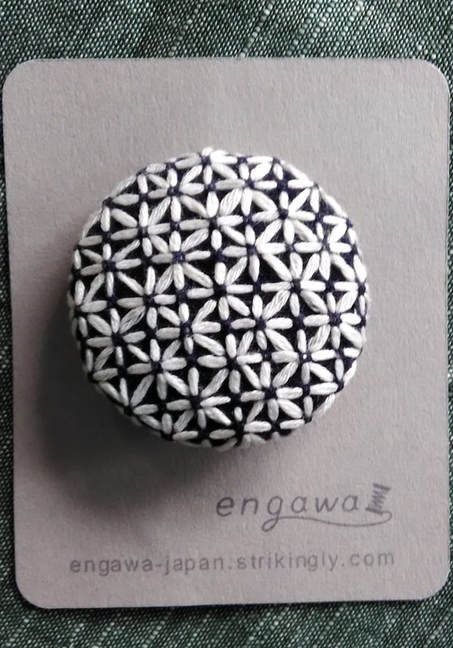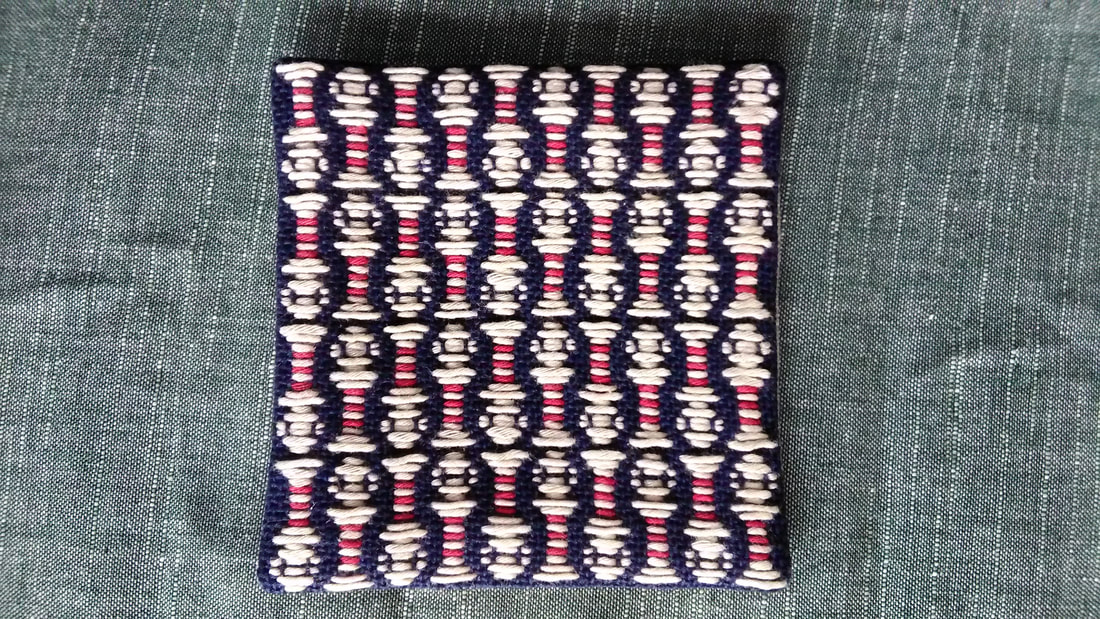|
I was in Sendai recently with a couple of hours to spare, so I set out to see what I could find in the way of sashiko in the centre of the city. Sendai is the capital city of Miyagi Prefecture, part of the northern region of Japan known as Tohoku, where the three main types of sashiko originated. Shonai sashiko (of which hitomezashi is typical) comes from Yamagata prefecture, on the eastern border of Miyagi, while kogin sashiko and nanbu hishizashi originated in Aomori prefecture, which is north of Miyagi but with Iwate prefecture in between. I didn’t have to go very far to make my first discovery. Less than a hundred metres from my hotel I found TRY6, a community-sponsored business incubator shop for local entrepreneurs, where my eyes were immediately drawn to a couple of shelves with a beautiful display of small items such as brooches, buttons and hair-ties stitched with kogin and Shonai sashiko. These were the work of an artist whose needle name is engawa. I couldn’t resist buying a charming brooch of white komenohana zashi (rice flower) stitched on indigo-dyed cloth. According to engawa's website, s/he was born in Hokkaido, lives in Sendai, and has been stitching sashiko items since 2013. Take a look at this link (in Japanese) to see more of engawa’s delightful creations. “minne” and “creema”, by the way, are online Japanese shops. The helpful manager in TRY6 gave me a tip about another gallery he thought might have some sashiko, and sure enough when I reached the galerie arbre, I discovered the work of two more sashikoists. Kogin mameco, the needle name of a lady who specializes in kogin sashiko, had a lovely range of book covers, zip pouches and pencil cases on display. Once again, however, I couldn’t resist the brooches, and purchased a sweet button-sized brooch covered in a rough-weave beige cloth stitched with a red ume no hana (plum flower). See Kogin mameco’s work here. Hitomezashi and kogin sashiko are currently extremely popular in Japan, so I was not surprised that all the sashiko I had found so far was exclusively in those two styles. The sashikoist known as harinoto, who lives in Tochigi prefecture (which is not Tohoku) and whose work I also discovered in galerie arbre, however, was doing something quite original with kogin. Harinoto had made a series of coasters representing the six prefectures in Tohoku, stitched with a kogin-style motif emblematic of each prefecture. These were apples for Aomori, iron tea-pots for Iwate, woven straw horses for Akita, wooden kokeshi dolls for Miyagi, cherries for Yamagata, and toy red cows for Fukushima. Naturally I bought a kokeshi doll coaster as a souvenir of my visit to Miyagi. I tracked down harinoto’s blog and found that she has also published a book about kogin sashiko. Koginzashi moyo asobi (Playing around with kogin sashiko patterns) Nihon Vogue, 2016 (Amazon Japan affiliate link) All in all it was a very pleasant and satisfying way to while away a few hours, walking around the backstreets of Sendai in search of sashiko!  Coasters by harinoto Coasters by harinoto
3 Comments
|
Watts SashikoI love sashiko. I love its simplicity and complexity, I love looking at it, doing it, reading about it, and talking about it. Archives
September 2022
Categories
All
Sign up for the newsletter:
|






 RSS Feed
RSS Feed



